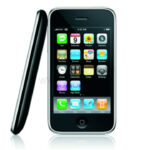Introduction – iPhone 3GS
The iPhone 3GS Apple introduced in June 2009 was the third generation of its smartphone line and a direct sequel to the warehouse-clearance that was the iPhone 3G, but with an S stuck onto it for Speed, stressing how much faster the phone would be compared to what came before it. With a faster processor, more RAM, and optimized software, the 3GS launched apps more quickly and scrolled between screens much easier than its predecessor.
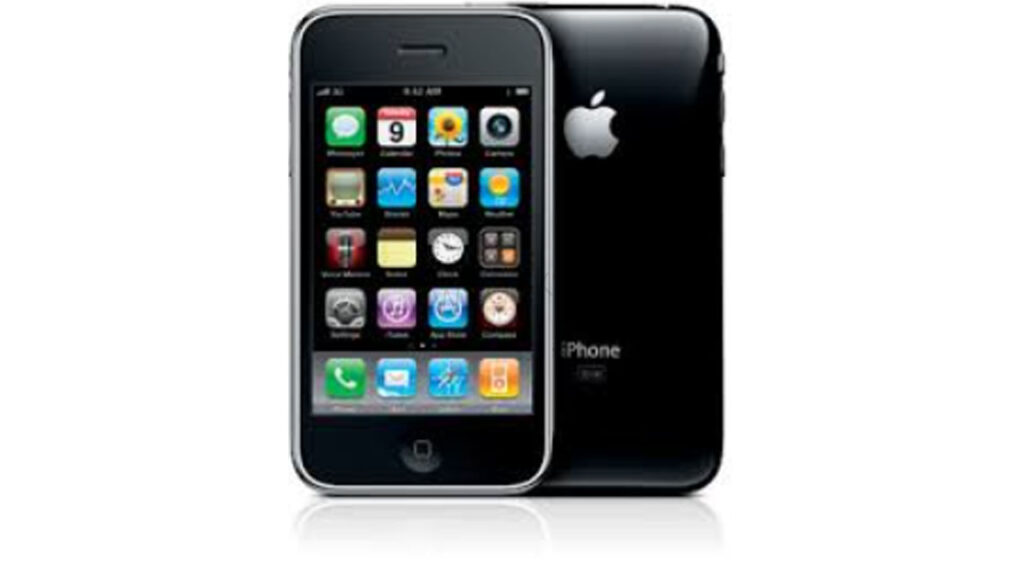
Though it still had the same glossy, curved plastic look of the 3G, inside it was different and for the better. It was the first iPhone to include a 3-megapixel camera with auto-focus and video recording capabilities. It also delivered voice control, longer battery life, and options for up to 32GB of storage for those who planned on installing more apps or carrying music and media.
The iPhone 3GS was when Apple pivoted its strategy from the grand second-coming style reinvention approach to one of refinement and speed enhancements being just as appealing, if not more so. It cemented the iPhone as a market leader, and put Apple on its yearly upgrade cadence.
Specs at a Glance – iPhone 3GS
Screen: 3.5-inches, 320×480 pixels (165 ppi) TFT capacitive display
Processor: 600 MHz ARM Cortex-A8
GPU: PowerVR SGX535
RAM: 256 MB
Strorage 8GB,16GB,32GB ( not expandable)
Back Camera: 3 MP, Auto-focus, video-recording @480p 30fps
Front Camera: None
OS at Launch: iPhone OS 3.0 (upgradable to iOS 6.1.6)
Battery 1219 mAhUp to 12 hours talk time on 2G,5 hours on 3
Network: 3G, Wi-Fi 802.11 b/g, Bluetooth 2.1, A-GPS
Size: 115.5 x 62.1 x 12.3 mm
Weight: 135 g
Colors: Black, White
Design – iPhone 3GS
The iPhone 3GS design closely resembled that of its immediate predecessor, the iPhone 3G, featuring a curvaceous rear shell and maintaining the polished stainless steel frame that gives the device a premium feel on top side of your palm. Unlike most modern smartphones, the rounded edges and smaller size of the BlackBerry Pearl made it very pocket-friendly without falling out and easy to grip during operation.
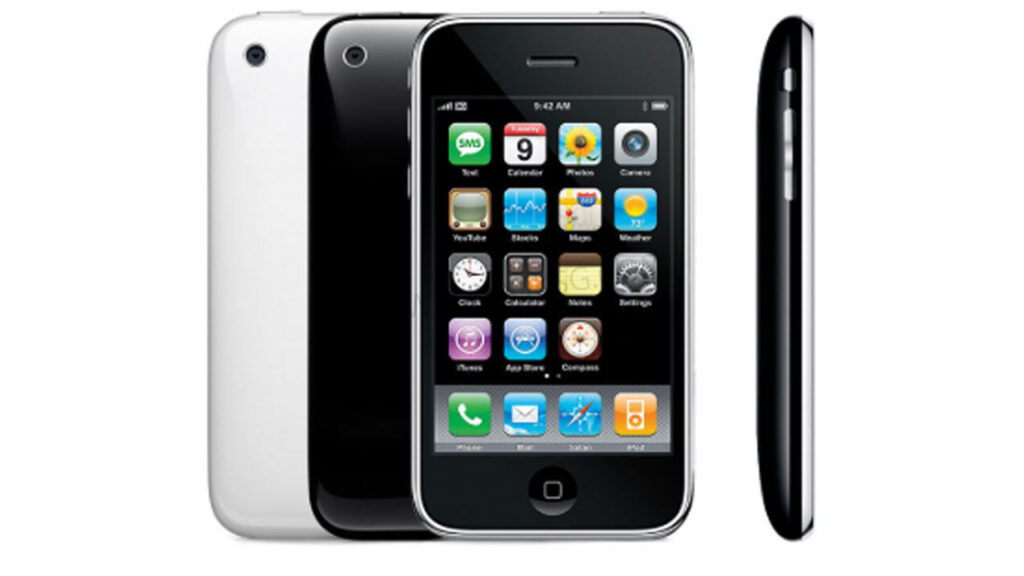
Up front, it had the familiar 3.5-inch display, adorned with a single circular Home button underneath (a design common to early iPhones). In black or white with black glass, the back read and showed Apple in enormous letters at the midpoint and a cameras hole in an upper-left panel. That plastic back was a fingerprint- and hairline-scratch-magnet, but it also kept the device feeling light when compared with metal-bodied devices.
The design of the iPhone 3GS overall was beautifully proportioned, marrying familiar usability with optimum ergonomics—yet subtly refined in areas for greater robustness and comfort.
Build Quality – iPhone 3GS
The iPhone 3GS was really solidly put together in much the same fashion as the iPhone 3G, with a glossy plastic back of very high quality and a firm steel internal frame for solidity and soundness. It was lightweight and yet the device felt solid in hand, without a hint of flex or looseness — typical of Apple’s standard for precision manufacturing.
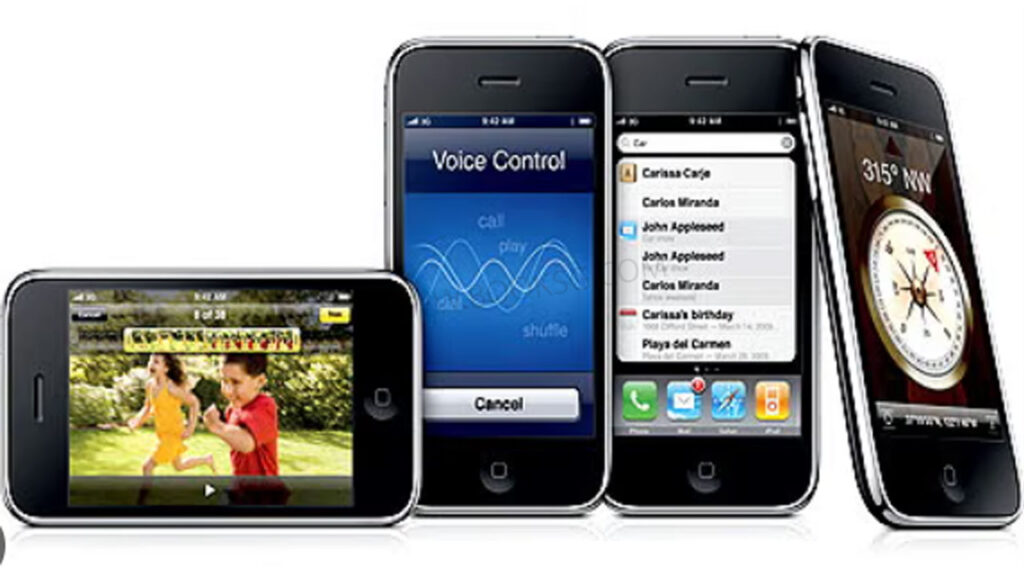
The display glass was firmly sealed to the frame to prevent dust from getting in and buttons had a pleasing clickiness about them. Although its shiny back plate was visually appealing, it did scratch and smudge a lot, and many ended up purchasing cases to preserve the look. Aside from comfort, the rounded edges also increased the phone’s lifespan by absorbing drops and bumps in a more forgiving manner than before.
While the plastic back was not ideal compared to later glass and metal designs, the overall feel was better than anything Apple has achieved since 2009 – strong and light without being too liable to return from whence it came.
Controls and Connectivity – iPhone 3GS
Apple was Apple and the iPhone 3GS followed in their clean and minimalistic control layout, which was easy to use. It had only the single physical button on the front: the circular Home, for going to main screen. On the left was a volume rocker for fast audio changes, as well as a mute switch distinguished by its ability to reduce all alerts with one quick move (a beloved iPhone hallmark). Top of the unit, with the power/sleep switch and back when a 3.5mm headphone jack was still standard in ’09.
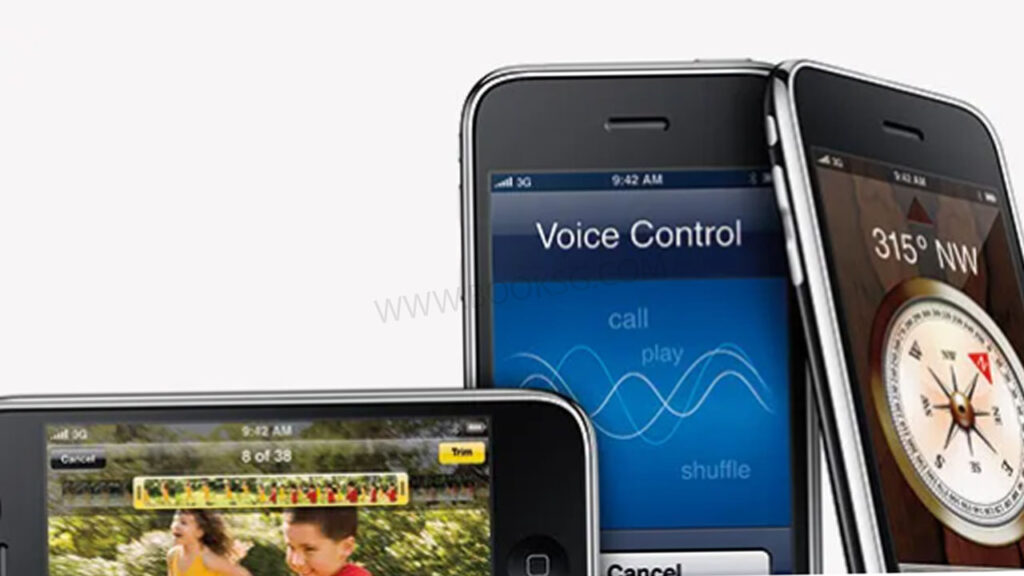
At the bottom is the 30-pin dock connector, which was used for charging as well as syncing things with iTunes and interfacing other accessories. The iPhone 3GS was capable of utilizing everything the original had, now including assisted GPS and 3G HSDPA support (850/1900/2100). At the bottom, it housed one speaker and microphone each for calls and media playback.
The iPhone 3GS launched without many modern conveniences like USB-C, NFC, or 5G but it had good connectivity in its day and was useful for calls and messaging as well as handling multimedia content.
Lab Tests: Display – iPhone 3GS
It came with a 3.5-inches TFT capacitive touchscreen display, resolution of 320 x 480 pixels (~165 ppi pixel density). While tiny at today’s scale, it was considered as-sharp and color poppin’ in 2009. This could display 16M colors using multi-touch gestures; pinch-to-zoom and swipe interactions were smoother than they had ever been up to that point.
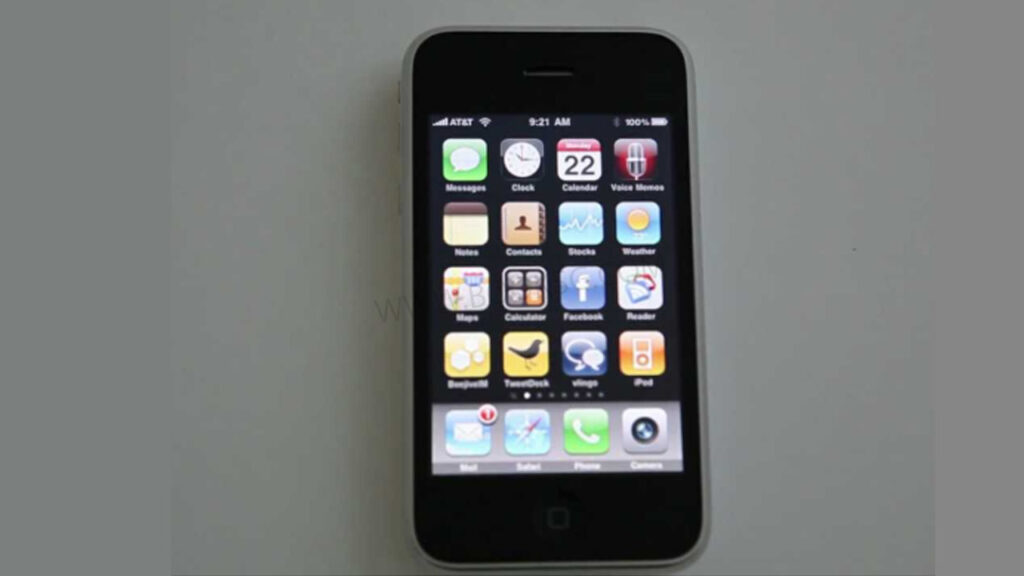
Brightness levels in lab tests reached about 480 nits, so certainly readable enough outdoors that you can take the tiny little projector outside (though direct sunlight causes glare reflecting off the glossy glass.) Resisted the above example for its era, but it couldn’t escape looking pretty grey next to a modern OLED panel when showing blacks. The viewing angles were decent, though some colour shift was noticeable when the phone is tilted.
The iPhone 3GS display also includes an oleophobic (finger-oil-repelling) coating to minimize fingerprint smudge, a very nice change versus the much more greasy-feeling iPhone 3G, and touch responsiveness was great along with the speedier processor—the screen felt really quite fluid for swiping, tapping… you know what we mean.
Battery Life – iPhone 3GS
Its hardware and software requirements were such that the 1219 mAh non-removable Li-Ion battery that came with the iPhone 3GS was sufficient. Apple rated it for up to 5 hours of talk time on 3G, 12 hours on 2G (GSM) and as much as 300 hours in standby. Half-decent power longevity was promised — 5 hours of web browsing on 3G or 9 hours over Wi-Fi; video playback stretched to around ten and music should last up to 30.
With daily jogging, texting, web browsing and sporadic-app use the 3GS can barely make it through one day in real-world usage. Heavy use — like long 3G internet sessions, or especially gaming — would see you having to charge up at mid-day. While the S-series chipsets produced impressive gains in power efficiency over the iPhone 3G, battery life would still very much limit what you could really do.
It had some improved battery life over its predecessor, largely due to optimizations on the software side of things in iOS 3 and also minor improvements with the hardware. It also had a very small battery by today’s standards, which would mean regular charging for most power users (rear entry).
Charging Speed – iPhone 3GS
The iPhone 3GS required Apple’s old-school 30-pin dock connector with the supplied 5W USB power adaptor — Apple had only one charging brick for its iOS devices back then. The battery of 1219 mAh was quite modest, the charging process itself was simple but being non-fast charge meant users would need to wait for the full cycle.
It generally took 2 to 2.5 hours for the iPhone 3GS to reach a full charge from completely drained with about 60-70 minutes needed for about that first half of a total charge. Read more: Here’s Why Everyone Misunderstood Phone Battery Life Meanwhile, the the charging speeds also tapered off to avoid overheating and protect battery longevity, a trend Apple continues with today.
It could also be charged from a computer’s USB 2.0 port, but as expected that was significantly slower than the wall adapter and sometimes added hours to a full charge. Wireless charging was still nonexistent and rapid charging did not yet exist, which never made its way to the device like most late-2000s phones.
However, the capacity of the iPhone 3GS’s smaller battery generally meant a full charge was sufficient to get through moderate use during a day; it still struck a reasonable balance between convenience and contemporary power requirements at that time.
Loudspeakers – iPhone 3GS
iPhone 3GS had a single mono speaker at the bottom edge next to the 30 pin dock connector We are talking about a speaker that has been designed to handle mainly phone calls in speakerphone mode, notifications, and casual media playback.
Audio quality is very decent here, the loudspeaker outputs clear mids and highs making voices in other human players and system sounds fairly easy to hear even in a slightly noisy home environment. Unfortunately, the small size of those drivers meant that the sound did not have much depth, and ended up sounding rather tinny at times. In addition, the speaker would get blown out at its max volume and could not be used for a music or movie experience with good sound quality.
Owing to these limitations, users eventually flocked back to using wired earphones plugged in through the 3.5 mm headphone jack for superior audio quality and privacy. Even though the loudspeaker did not offer high-end performance, it was stable and good enough for calls, alarm sounds or some music playback (which were the common necessities in 2009).
Software – iPhone 3GS
iPhone OS 3.0 and Key Features Introduced: June | The iPhone 3GS debuted with the release of iPhone OS 3.0, which brought some vital capabilities to iOS that improved how you could use and work with an iDevice. This was a highly anticipated release and finally added cut, copy & paste features so you could move text and images between apps. It also featured MMS support for sending multimedia, such as photos and videos, via text, and expanded landscape keyboard functionality to more apps for easier typing.
Perhaps the most notable software update was the growth of the App Store, which held tens of thousands of third-party apps and games by 2009. The 3GS’s faster processor (now a 600 MHz unit) and twice as much RAM, made it not only operating speedier but also less prone to crashing apps. This in return made it more suitable for gaming, multimedia and productivity related uses of the phone.
It also introduced Voice Control for the first time, which let users make calls, play music or control basic commands with their voice. It was rudimentary compared to Siri and those that came after, but it provided a view forward for Apple.
Also new in iOS 4.3 was better camera control, Bluetooth 2.1 support with further enhancements for connectivity and power management along with the later arrival of Personal Hotspot functionality allowing an iPhone to be used as a tethered modem.
Some quick math shows that the 3GS was updated all the way through iOS 6.1.6 and remained a relatively secure, working device for years after its initial release. Featuring refined software paired with capable hardware, the iPhone 3GS was a truly rounded device in its day.
Performance – iPhone 3GS
iPhone OS 3.0 and Key Features Introduced: June | The iPhone 3GS debuted with the release of iPhone OS 3.0, which brought some vital capabilities to iOS that improved how you could use and work with an iDevice. This was a highly anticipated release and finally added cut, copy & paste features so you could move text and images between apps. It also featured MMS support for sending multimedia, such as photos and videos, via text, and expanded landscape keyboard functionality to more apps for easier typing.
Perhaps the most notable software update was the growth of the App Store, which held tens of thousands of third-party apps and games by 2009. The 3GS’s faster processor (now a 600 MHz unit) and twice as much RAM, made it not only operating speedier but also less prone to crashing apps. This in return made it more suitable for gaming, multimedia and productivity related uses of the phone.
It also introduced Voice Control for the first time, which let users make calls, play music or control basic commands with their voice. It was rudimentary compared to Siri and those that came after, but it provided a view forward for Apple.
Also new in iOS 4.3 was better camera control, Bluetooth 2.1 support with further enhancements for connectivity and power management along with the later arrival of Personal Hotspot functionality allowing an iPhone to be used as a tethered modem.
Some quick math shows that the 3GS was updated all the way through iOS 6.1.6 and remained a relatively secure, working device for years after its initial release. Featuring refined software paired with capable hardware, the iPhone 3GS was a truly rounded device in its day.
Camera – iPhone 3GS
The iPhone 3GS brought noticable change to the camera of Apple’s mobile device line.react-text: 140What Is An ESN or MEID? /react-text –> A 3-megapixel rear-facing camera for the first time in an iPhone, complete with autofocus that users could tap on the screen to focus on objects. This upgrade meant photos were automatically in focus — a lightyears leap from the fixed-focus camera on the iPhone 3G, and showed even sharper detailleurs images.
First, the 3GS also marked the arrival of video recording, allowing users to record VGA-quality videos at 30 frames per second natively with the camera app. This was a significant improvement over the last model, which didn’t have video recording at all.
The camera was also capable of automatic exposure and white balance adjustments, resulting in better quality photos under different lighting situations. But, there were still no flash or optical image stabilization features causing limited performance under low light and the ability to bring sharp images under harsh conditions.
All in all, the iPhone 3GS camera provided a nice blend of increased functionality and ease-of-use that should further close the purses on Apple’s mobile photography competition at the time and make photo (and even video) capture more user-friendly to almost anyone deemed interested in taking pictures or making movies on their new iDevice.
Photo and Video Quality – iPhone 3GS
The iPhone 3GS brought significant photo and video quality improvements over its predecessor. The 3-megapixel camera with autofocus was capable of taking more detailed and sharper images, notably in good light. Colors were quite accurate and natural, but you could easily run out of dynamic range with things like blown-out highlights or shadow loss.
The biggest new feature was video recording, but it only shot 480p@30fps clips. Such videos were smoother for the era, but did not have advanced stabilization and lacked high resolution; videos taken with that phone are best-suited only to occasional moments, rather than for professional use. Now the audio recording was crystal clear but it was in mono and of course more limited fidelity than video.
Low light performance was still tough as there wasn’t a flash or huge sensor. Damaging was common in darkish environments and focusing may be gradual But for most everyday snapshots in good light, the camera consistently delivered fine results.
So in the end, while it wasn’t always bright and sunny skies for Apple when trying to break into mobile imaging, the iPhone 3GS was a nice big step forward, pioneering video capture and autofocus on its own platform — things that would be taken much farther with future releases.
Alternatives – iPhone 3GS
BlackBerry Bold 9000
Physical QWERTY keyboard
Excellent email and security features
Popular with business users
Nokia N97
Larger touchscreen with sliding keyboard
Carl Zeiss optics, 5 MP camera
Good expandable memory and multimedia support
HTC Magic (T-Mobile myTouch 3G)
Early Android smartphone
Customizable interface and multitasking
Will Be Available For Google Play Store Apps
Palm Pre
Innovative webOS with gesture navigation
True multitasking capabilities
Unique user experience
Sitting next to the iPhone 3GS, these alternatives were designed with differing hardware and specs that catered to various consumer types.
Pros and Cons – iPhone 3GS
Pros:
Faster processor and double the RAM for better performance
First smartphone with Autofocus camera video recording features
Increasing apps in the App Store
Geeks: More Battery Life Than iPhone 3G
Great new iPhone OS 3.0 software
Conclusion: Sleek, comfortable design in a hardwearing shell
Included features like cut/copy/paste, MMS support etc.
Voice Control for hands-free commands
Cons:
No Selfie and Video call front camera
Poor quality camera, no flash and poor results in low light.
Modern standards by screen resolution and size are too limited
Non-expandable storage options (max 32GB)
Early iPhone OS versions: No codes allowed on other apps; Later updates: Only certain signals, e.g. calls and SMS; no opening other applications
Slow to charge by modern standards
Single mono speaker with below average sound output
Missing out on cutting edge connections such as NFC or 4G
Verdict – iPhone 3GS
The iPhone 3GS marked a pretty big upgrade for Apple’s smartphone lineup, bringing significant speed boosts, camera upgrades and software features to the much-loved design of its predecessor. While it still may not be simple, iPhone 2.0 turned the phone into an elegant experience with linkage to the fast-growing App Store and further secured its place as best-of-breed.
And while early versions of the software lacked, say, a front camera and flash for better multitasking performance nothing could compete with how fast and simple getting around on an iPhone was for users everywhere. With autofocus and video recording, the 3GS set new benchmarks for mobile photography while better battery life and connectivity made it a more useful device everyday.
If you’re feeling nostalgic for the early days of smartphones or curious about mobile technology back when it was still in its infancy, the iPhone 3GS is part of an important chapter that helped define Apple devices and modern-day smartphones.


